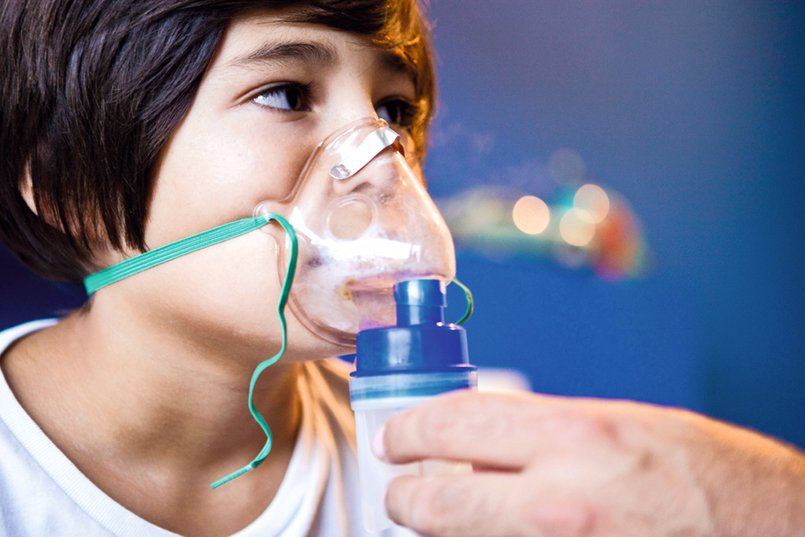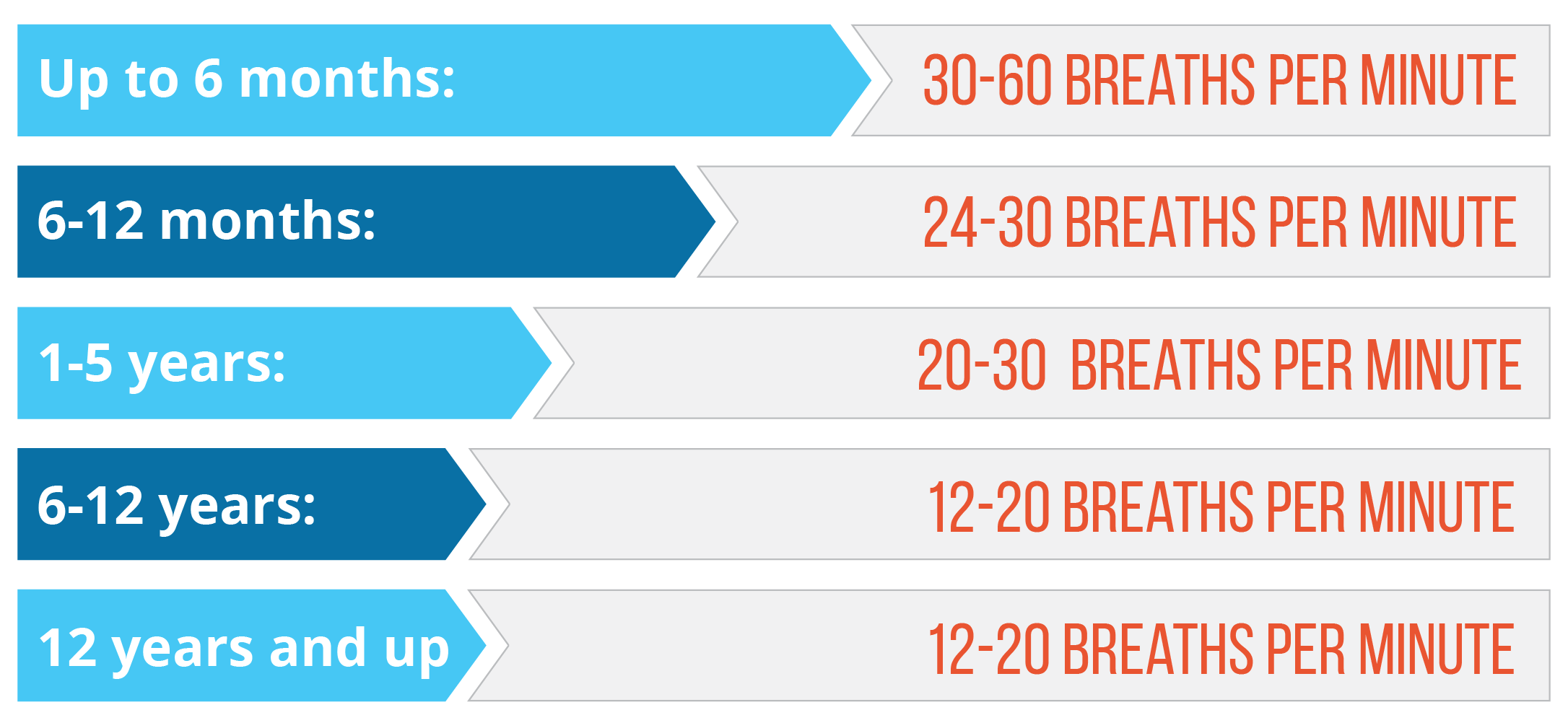
Sickness affecting breathing can be a tough time for kids. In any given year, a kid is likely to get from 6 to 10 colds. How can parents know their child is just congested or when he/she is actually having breathing problems?
First, you need to know what is considered as normal, typical and healthy breathing.
What is the normal breathing rate for kids?
The normal breathing rate of your child depends on his/her age:

To measure how fast your child is breathing, count the number of times his/her chest rises in 1 full minute. If your child’s breathing is outside the normal range for his/her age, that can mean something is wrong.
What could it be?
Breathing difficulty can be a symptom of several conditions.
- BRONCHIOLITIS. This lung infection usually affects children under 2 years old. It is caused by respiratory syncytial virus (RSV) which causes fever, cough, wheezing and fast breathing.

- ASTHMA. Symptoms include shortness of breath, wheezing and coughing.

- PNEUMONIA. This can be from a virus or bacteria. It causes fever, cough and rapid breathing.

- ALLERGIES. Your child may have itchy or watery eyes, rash, runny nose, cough and laboured breathing.

When to seek treatment?
If you are worried about your child’s breathing, it is important to act quickly. Go to the clinic or hospital immediately if:
- Your child is breathing faster than according to his/her age.
|
Age |
Breathing rate |
|
< 1 years old |
> 60 breaths per minute |
|
1 - 5 years old |
> 30 breaths per minute |
- Your child has severe breathing difficulties or is exhausted from trying to breathe.
- Your child’s breathing stops for >10 seconds at a time while he/she is asleep (sleep apnoea).
- There are regular short pauses in their breathing of 5 - 10 seconds while they are awake.
- Your child is wheezing (high-pitched whistling sound when he/she exhales).
- You notice the skin pulls in and out between each rib with each breath. This is called chest retractions. Another way is to look at the neck and collarbone of your child. If you can see the skin pulling down to the collarbone or your child is straining his/her neck muscles with each breath, it could mean a significant breathing problem.
- Your child has flaring of the nostrils when he/she exhales.
- Your baby is grunting every time he/she exhales.
- Your child is sluggish, drowsy and there is decreased activity level.
- Your child’s skin, lips, tongue or nails turn blue (cyanosis).
- Your child also has rash or facial swelling (severe allergic reaction).
References:
- Is My Child Breathing Too Fast? | WebMD
- How to Check for Difficulty Breathing in Children | Verywell Health
- Signs of Breathing Problems in Children | British Lung Foundation
Image credit:
- https://images.theconversation.com/files/226190/original/file-20180704-73306-dshldi.jpg?ixlib=rb-1.1.0&q=45&auto=format&w=754&fit=clip
- https://images.onlymyhealth.com/imported/images/2015/May/20_May_2015/asthma-in-kids650x325.jpg
- https://img.webmd.com/dtmcms/live/webmd/consumer_assets/site_images/medical_reference_visuals/2017/10_2017/Is-my_child_breathing_too_fast_chart.png
- https://lh3.googleusercontent.com/CsB24ObI052DHNJemvGCcOnl14tAPOMzhIWEOB1oW1l0JTTaTiPZ8dWnv2v4o8frtEWihw=s94
- https://www.shutterstock.com/es/image-photo/boy-nebulizer-mask-157298669
- https://www.shutterstock.com/es/image-photo/sick-child-boy-laying-bed-mom-793435201
- https://lh3.googleusercontent.com/4eMRAn7S6WSGw0tQygTR9tpyM5LIzf0aFOomg9Gz7IwAjOYlIeqULbYa3YoTQLDGdNo2w-U=s128








